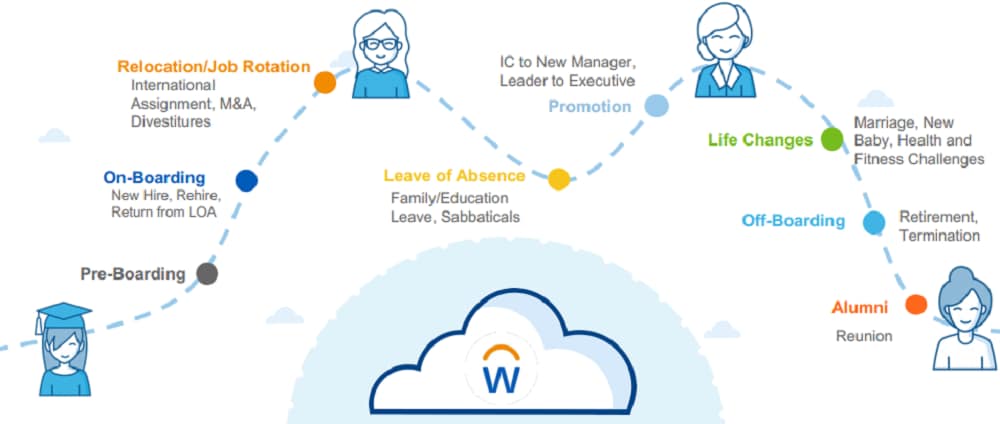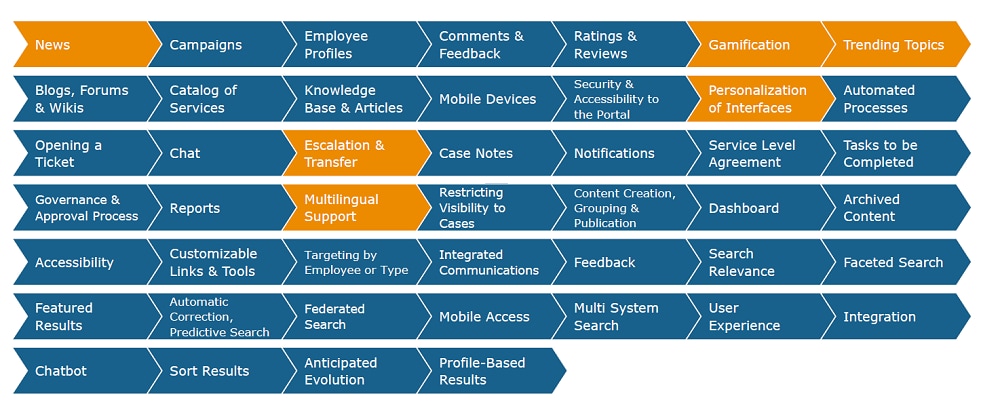Workday People Experience | Deloitte US has been saved

A mainstay of HR service delivery is case management or the way HR handles all the requests they receive from employees. At its most basic level, employees can bring their questions to HR via phone, email, or in-person visits, and HR keeps a manual log of these requests and how they were resolved. At some point, however, this approach becomes impractical.
That’s when organizations turn to technology for help. An HR case management solution routes inquiries to the appropriate people while recording the status of each request and the actions being taken to address it. These capabilities tend to be bundled with knowledge management capabilities plus a self-service portal for employees to look up answers on their own.
About a year ago, Workday announced the introduction of Workday People Experience or PEX as it’s known to us in the field. In this article, I’m going to help answer some of the most frequently asked questions we get about PEX.
What does Workday offer?
Workday People Experience consists of three different services. The first, called Workday Help, has the case and knowledge management functionality I talked about earlier. It lets you define different case types, service categories, and service teams, each enabled with routing rules to address different populations, geographies, and business units. Employees who create an HR case can tag and speak with case solvers, from their desktop, mobile app or tablet, as the case is being resolved.
Powered by machine learning, Workday Today offers a user interface that greets employees individually with local time and weather, pushes time submission notifications, and more. A chatbot is available to answer questions and help with tasks. The service can integrate with Slack and Microsoft Teams so employees can carry out basic tasks without logging into Workday.
Lastly, Workday Journeys are intuitive guides that support employees as they move along a particular path—think international assignment, new manager, back to work after a leave of absence, and so forth. It bundles articles, tasks, and other content across systems and presents them to the employee at the moment it matters.

Image source: Workday
It also lets organizations build custom cards for events such as anniversaries and leave approvals, which can connect to payroll, benefits, and other third-party systems. For example, a card can link to a payroll system to show payment notifications.
When is the right time to implement Workday PEX?
At Deloitte, we lean towards implementing Workday PEX after your initial Workday system is in place; but there’s no hard-and-fast rule, just a set of factors to consider. Then there’s your existing case or knowledge management solution. How many are using it today? How are they using it? What’s the renewal timeframe? All this can have a bearing on when to implement Workday PEX.
Still another consideration is the inherent dilemma of implementing a knowledge tool. The implementation requires educating employees on how to navigate the new system. But to educate them, you may need your existing tools to be available. That’s one reason why a few of our clients have opted for a hybrid approach, releasing Workday PEX functionalities as they line up with where the organization is along its HR transformation journey.
Where is the opportunity to grow?
In the Workday community, thousands of customers and ecosystem partners come together to provide feedback and ideas for future releases.
The illustration below shows the functionality we saw among the case management and knowledge management tools that are currently in the market. Blue means the functionality exists in PEX today. The capabilities in orange are currently under development for future Workday releases.

Why is Workday PEX a potentially strategic move for your organization?
To answer this question, let’s rewind to the not-too-distant past when on-premise HR systems weren’t known for their cutting-edge capabilities. Spreadsheets ruled the day more often than not.
But then user expectations changed. Just as we experience shopping or television today, we began looking to technology to define our HR experience — from guiding us through daily tasks to anticipating and responding to our career development needs. Meanwhile, the advent of HR cloud systems offered organizations the chance to reimagine the employee experience. Static on-premise solutions gave way to dynamic online services. Machine learning and artificial intelligence began empowering HR and leadership teams with meaningful insights and predictive analytics.
Still, many organizations continue to spend significant time and money on managing cases and updating knowledge documents. They’re also dedicating more resources to educate employees on how to use the system, only to fall short of their user adoption and satisfaction goals.
That’s where Workday PEX comes in. Right from the start, Workday PEX eliminates much of the work associated with integrating separate systems. Through Workday’s power of one, employees and their security protocols are predefined in the system. A robust search engine, automated suggestions to boost employee engagement, and ongoing improvements through multiple releases are all aimed at helping organizations yield a greater return on their HR technology investment.
Ready to learn more? We’d love to help you get the most out of your Workday investment and share how Workday People Experience could benefit your organization.

Learn more about Deloitte’s Workday alliance here: www.deloitte.com/workday
Read our 2021 Human Capital Trends here
Author
Vamsi Krishna Aavula: Vamsi Krishna Aavula is a senior manager and leader in Deloitte’s Workday Package and Evolve service offerings. He has more than nine years of experience implementing Workday solutions for customers across the globe and led Deloitte's first global implementation of the Workday People Experience product. Now, based in the United States, Vamsi has also worked in India, France, and Canada. Previously, he was a talent partner with a large financial institution. Vamsi holds a master’s degree in human resource management from the Indian Institute of Technology, IIT, Kharagpur.
(email: vamaavula@deloitte.com)
Get in touch

Todd Amsley
Todd has spent the last 25 years helping clients and leading teams focused on Application Management Services (AMS), IT outsourcing and Human Capital outsourcing. As Deloitte’s Human Capital AMS leader, he supports cloud solutions across several platforms including Workday, Oracle, SAP/SuccessFactors and other HR solutions. He brings a working knowledge of contracting, transition, and performance management for the delivery of engagements.
